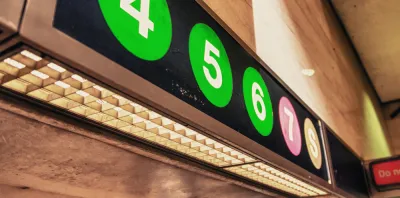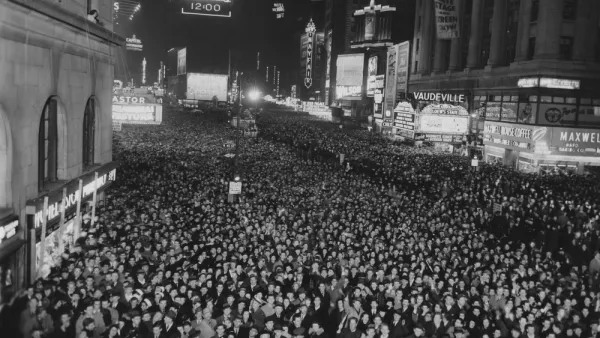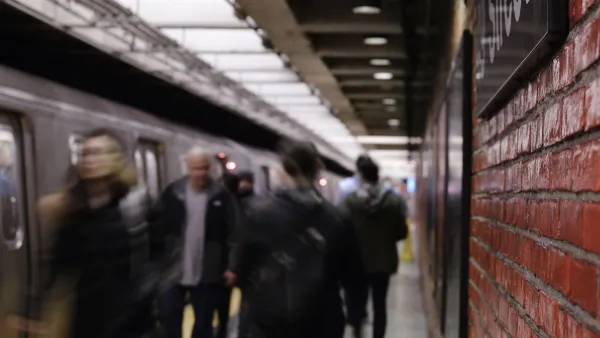As sky-high real estate prices force many lower-income New Yorkers to the periphery, they're paying an additional price in lengthy transit commutes. Meanwhile, real estate interests that benefit from transit investment bear few of its costs.

While negative stories on New York's transit system often focus on dramatic incidents, Jim Dwyer writes, the real problem is less picturesque. For many lower-income users, "The city's transit system controls everyday life [...] so insistently and so routinely that no one has thought to declare the situation a state of emergency."
Dwyer cites a 2013 study by the Pratt Center for Community Development and the Rockefeller Foundation indicating that "758,000 New York City residents now travel more than an hour each way to work, most of them to jobs that pay less than $35,000 per year." In addition, "Black New Yorkers' trips to work are 25 percent longer than whites, and Hispanics, 12 percent longer than whites, other research by the Pratt Center found."
Dwyer also points to the fact that despite New York transit's long-standing history of boosting nearby real estate, "none of the current proposals by the mayor or the governor for funding it touch on property values. That means the system captures none of the boom created by the new Second Avenue subway line on the Upper East Side of Manhattan."
FULL STORY: Pushing New Yorkers Beyond the End of the Line

National Parks Layoffs Will Cause Communities to Lose Billions
Thousands of essential park workers were laid off this week, just before the busy spring break season.

Retro-silient?: America’s First “Eco-burb,” The Woodlands Turns 50
A master-planned community north of Houston offers lessons on green infrastructure and resilient design, but falls short of its founder’s lofty affordability and walkability goals.

Delivering for America Plan Will Downgrade Mail Service in at Least 49.5 Percent of Zip Codes
Republican and Democrat lawmakers criticize the plan for its disproportionate negative impact on rural communities.

Test News Post 1
This is a summary

Test News Headline 46
Test for the image on the front page.

Balancing Bombs and Butterflies: How the National Guard Protects a Rare Species
The National Guard at Fort Indiantown Gap uses GIS technology and land management strategies to balance military training with conservation efforts, ensuring the survival of the rare eastern regal fritillary butterfly.
Urban Design for Planners 1: Software Tools
This six-course series explores essential urban design concepts using open source software and equips planners with the tools they need to participate fully in the urban design process.
Planning for Universal Design
Learn the tools for implementing Universal Design in planning regulations.
EMC Planning Group, Inc.
Planetizen
Planetizen
Mpact (formerly Rail~Volution)
Great Falls Development Authority, Inc.
HUDs Office of Policy Development and Research
NYU Wagner Graduate School of Public Service





























